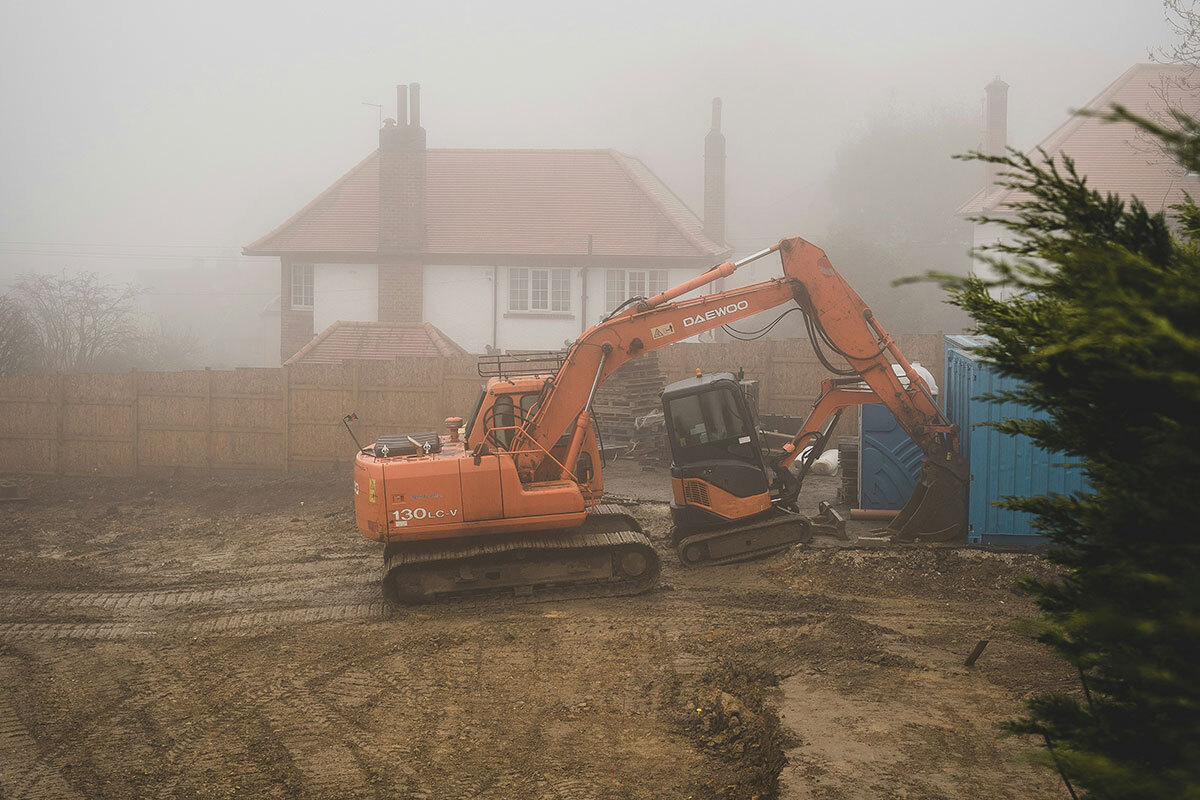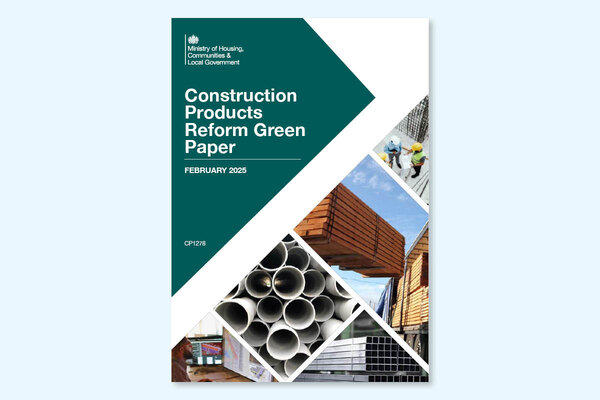How will the housing sector finance decarbonisation of its stock?
We know that it will cost a significant amount to retrofit all of the UK’s social housing stock. So how do landlords expect to pay the bill? Jess McCabe reports. Illustration by Nathan Hackett
It is widely known that the whole UK economy needs to get to net zero carbon emissions by 2050. But if you dig through the reports of the Climate Change Committee, you will find a graph that might still startle plenty of landlords. The graph shows how much carbon different sectors of the economy will emit in 2050, from agriculture to electricity production, and from industry to buildings.
By 2050, it says, the carbon emissions from buildings will be 0.2% the amount they were in 2018.
For social housing, the cost to decarbonise all homes is likely to be in the region of £104bn by 2050, as Inside Housing revealed in a sector-wide investigation in December last year. It is, let’s just put it out there, a lot of money. So we wanted to try to find out: how is the sector going to pay for it?
“You can’t just view carbon without looking at the wider issues too, [because] it’s all drawing down on a finite resource”
The first port of call is inevitably government. So far, Scotland has set out what landlords are required to do, but energy efficiency standards are widely expected in the rest of the UK shortly. In England, it is expected that minimum energy efficiency standards will be included as part of the new Decent Homes Standard.
When it comes to paying for the work, the government in England has said it will put in place a £3.8bn Social Housing Decarbonisation Fund, and earlier this month an official from the Department for Business, Energy and Industrial Strategy told the Retrofit Challenge: Virtual Summit conference that £60m will be released this year. Funding pots are also available in Scotland and Wales.
But this still leaves a yawning gap. “You can’t just view carbon without looking at the wider issues too, [because] it’s all drawing down on a finite resource,” notes Paul Richards, group customer services director at Orbit.
By which he means that landlords can also expect big bills for building safety, the new Decent Homes Standard (which is likely to require other investments, as well as energy efficiency), the Social Housing White Paper – and the cost of building more homes. Balancing all these requirements is widely expected to cause problems for the business plans of most landlords.
While it is part of a broader picture, Inside Housing wanted to focus on the specifics of getting to net zero, as this has its own specific challenges.
“There is an absence of a government roadmap for what the expectations of the sector are, and so we lack clarity about the grant funding available in the future. What we need is policy clarity about the milestones the sector needs to deliver against, and the funding that will be in place. In the absence of that, all we can do is be prudent,” says Jonathan Higgs, chief executive of Raven Housing Trust in the South of England. “We’re assuming just £500 a home in grant. It could and certainly should be substantially more than that.”
Tom Jarman, consultant and director of Low Carbon Journey, says the sector needs to assume that governments are not going to sweep in and solve this through grant.
“No one is going to give us £104bn. They might give us a few billion, but not £104bn,” he notes. “We have got into a habit of pressing the government to tell us what to do, and give us the money to do it,” he adds. That will not be sufficient in this case.
“There is an absence of a government roadmap for what the expectations of the sector are, and so we lack clarity about the grant funding available in the future”
There are costs to being led by government regulation too much, Mr Jarman argues. He notes that, for example, many landlords allowed the Energy Company Obligation (ECO) funding programmes to define the parameters of work carried out on their homes – instead of what needed to be done. This has had a negative impact on how useful those programmes ultimately have been.
To give one example, Mr Jarman says: “There were almost no ECO programmes that included post-occupancy monitoring. We didn’t put on our client head and say, ‘How do we understand the outcome of this and how it translates to value?’”
That is not to say that it is impossible for government to be persuaded to provide more support. Mr Jarman says that if the sector is able to take charge of the retrofit agenda, and present evidence to government, other opportunities could open up. One example is health and care. There is lots of evidence that warm, well-insulated buildings do reduce health problems and therefore create savings for the health and care sectors.
But ultimately, social landlords are going to need to look elsewhere. In Scotland, the government has set out the path that landlords need to follow through the Energy Efficiency Standard for Social Housing (although the standards may be tightened still further to align with zero carbon targets, the Scottish government announced this month).
But this is going to involve considerable spending by social landlords. Wheatley Group has estimated that it will need to spend in the region of £0.5bn to get its stock to EPC Rating B by 2032.
Some savings might be made simply from better technologies, and products and homes becoming more efficient in general.
Raven’s Mr Higgs explains that the association’s board has factored in that, over the next 30 years, this might reduce the cost of doing the work needed on its 7,000 homes by about 10%. “I think it’s a very prudent assumption. Efficiencies and innovations will come,” he says.
But the next step for Raven is to reassess its stock. “Some of our stock might have been worth putting a new boiler in, or replacing a kitchen, but it might not be worth spending £40,000-worth of retrofit on, when you look at the quality of accommodation and what people’s expectations will be in 40 to 50 years’ time,” Mr Higgs says. “Where we’re settling at the moment is about 15% of our stock might fall into that category. We’ll be looking at a mix of, wherever we can, regeneration, and where it’s not economical, we’ll look at disposal. That disposal can bring with it an income that can help us improve the balance of our stock.”
“It would be irresponsible to say that absolutely every property we currently own will go on the journey with us to zero carbon”
That might mean selling off a home that, for example, is part of a terrace that would be expensive and difficult to retrofit. It must be noted that this home will probably need to be retrofitted anyway, and this would just displace the cost and work on to whoever buys that home. But Mr Higgs says: “It would be irresponsible to say that absolutely every property we currently own will go on the journey with us to zero carbon.”
Regeneration – and the replacement of homes – may also leave room for perverse incentives, says Rose Bean, director of asset management and regeneration at Abri, if government regulations do not count the embodied carbon (the carbon emissions associated with building a home) as well as “operational” carbon (the emissions from heating and lighting a home).
Regeneration is at the top of Abri’s agenda too, Ms Bean says, because “the net zero impact has a big, big impact on the financial viability of units”.
In numbers
£104bn
Potential cost to decarbonise all social homes by 2050 (according to Inside Housing's previous analysis)
£3.8bn
Amount allocated in the Social Housing Decarbonisation Fund
$500bn
Amount invested globally in decarbonisation in 2020 (according to BloombergNEF)
But she also cautions that regeneration only “succeeds very well if you ignore embodied carbon”. There is also the question of what sort of homes replace the old ones. As Ms Bean notes, “we need to stop adding to the retrofit problem” by building new homes that are not of a high enough standard themselves, and will one day need to be retrofitted.
Karin Stockerl, director of asset strategy and services at Optivo, suggests: “For some types of homes which are difficult to retrofit, government might consider some exemptions and only require the sector to fit all the reasonable measures from a technical and costs efficiency point of view.”
But one cannot help but think back to the Climate Change Committee’s graph – if emissions from all buildings are really to be 0.2% of 2018 levels, the government will not be able to afford many exemptions.
However it is done, removing the most expensive-to-retrofit homes does shrink the overall cost.
Clever procurement could further reduce the costs. “If we get some really good, value-oriented models in place it might cost £90bn,” says Mr Jarman.
What is left, though, is still a considerable amount of work, and a cost that ultimately the sector itself will probably need to meet.
One solution that some landlords have repeatedly raised is that rents could be a mechanism to pay for this work – a policy that is known as ‘warm rents’.
“Housing providers also need to find other ways to fund energy retrofits other than through government funding. This route alone will not be sufficient to fund net zero carbon homes”
Homes that have been retrofitted should be considerably cheaper to run, so the idea is that tenants of those homes would pay slightly more rent. “If we invest in more efficient homes that reduce energy consumption, customers will clearly benefit from reduced heating bills. Could that be linked to rent formula? That’s the sort of conversation we need to have,” says Orbit’s Mr Richards. Whether there is the political appetite for this is another question.
Green finance could also provide part of the solution to the sector. “Housing providers also need to find other ways to fund energy retrofits other than through government funding. This route alone will not be sufficient to fund net zero carbon homes,” Ms Stockerl says. “The examples of the green banking models in Germany with very low-interest loans for energy efficiency improvements, or the warm rents model in the Netherlands, could also benefit us here, especially for social housing.”
Several landlords have secured various kinds of ‘green bonds’. So far these have been linked to ventures such as getting more tenants into work, but there is clearly some more potential here.
This could change in future. Take Wheatley Group, for example, and that £0.5bn of costs. “We will fund from our existing resources in the short term,” explains Tom Barclay, director of property and development at the 92,885-home landlord. “Our future debt issuance will have some form of sustainability measure.”
Analysis by financial data firm BloombergNEF published earlier this year found that more than $500bn was invested globally in decarbonisation efforts in 2020 alone. Or, as Bloomberg’s climate finance expert Michael Leibreich put it: “There is a wall of money targeting opportunities in financing the net zero transition.”
In Brooklyn, a start-up called BlocPower is tapping into this by using data analytics to provide heat pumps to apartment blocks with no upfront costs, using a model that will be familiar to anyone who remembers the ill-fated Green Deal policy. Connecting landlords with green finance is something the government could potentially help with.
For the moment, though, it seems like the sector has not yet found the answer to how to pay for decarbonisation.
The Scottish government plans to set up a green heat finance taskforce this year. The Treasury is also expected to produce a key document later this year called the Net Zero Review, which should have more details on how government expects the transition to be paid for across the whole economy, housing included. Other government policies, such as the Decent Homes Standard, should continue to make the roadmap a bit clearer.
But it seems there is still a lot of room for innovative ideas – and particularly innovation in green finance – to raise the funding that is going to be needed.
Sign up for our daily newsletter
Already have an account? Click here to manage your newsletters













